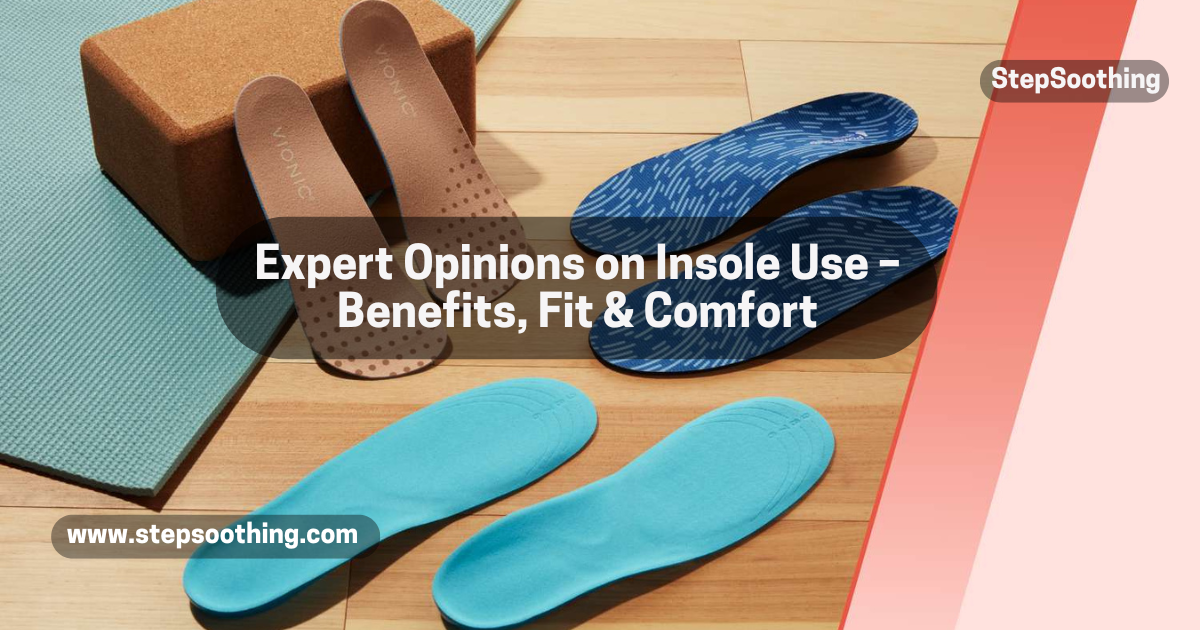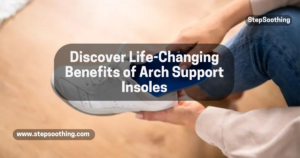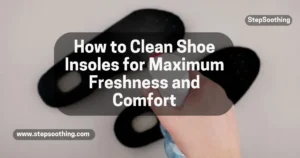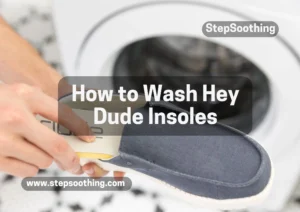Foot pain is a common issue caused by structural misalignment, improper footwear, or inadequate support. Insoles are essential in promoting comfort, stability, and overall foot health by helping to alleviate conditions such as plantar fasciitis, over-pronation, and supination. Many medical professionals advocate for insole use as part of a comprehensive treatment plan to relieve discomfort in the ankles, knees, hips, back, and even the neck. Expert opinions on insole use highlight their effectiveness in improving posture, reducing strain, and enhancing mobility for individuals with foot-related concerns.
With various foot shapes, arch profiles, and footwear types, choosing the right insoles can be challenging. Whether you need cushioning for casual shoes, high-volume support for hiking boots, or customized solutions for specific conditions, finding the right fit is essential. This article dives into expert opinions, real-world experiences, and key factors to consider when selecting insoles for maximum comfort and stability.
Expert Opinions on Insole Use: My Personal Insights and Research-Backed Findings
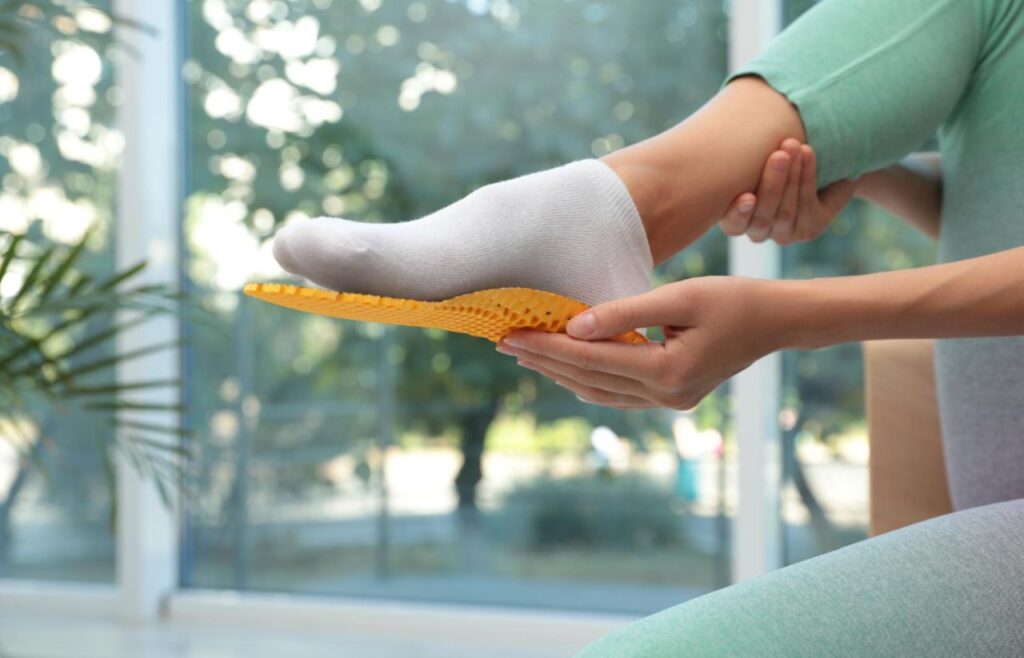
Why Insoles Matter for Foot Health
Growing up, I never paid attention to insoles. I thought they were just extra padding inside shoes. But when I started experiencing foot pain from walking and running, I realized they play a key role in support and stability. Many people suffer from structural misalignment without even knowing it, which can lead to discomfort in the ankles, knees, hips, back, neck, and even head.
Medical research and expert opinions show that using the right insoles can help with conditions like plantar fasciitis, where the plantar fascia, a connective tissue at the bottom of the foot, becomes inflamed. Medical professionals often include insoles as part of a treatment protocol to reduce heel and forefoot pain, particularly in cases of supination and over-pronation—where the feet either roll out or experience excessive rolling in while moving.
Related Article: Evidence-based benefits of using insoles
Choosing the Right Insoles for Different Needs
Not all insoles are created equal. Some are customized to fit an individual foot, while others are generic models designed for various profiles and foot shapes. The type of footwear you use also matters—high-volume insoles are perfect for hiking boots, ski boots, and running shoes, while medium-volume ones fit casual shoes and athletic footwear. If you have low arches, you may need low-volume insoles, which work best in cycling shoes, in-line skate boots, and ski skate boots.
One of the common fit problems people face is heel slippage, where the heel moves too much inside the shoe, causing instability. Others experience midfoot or forefoot discomfort due to excess space inside the shoe, leading to hot spots, blisters, and foot elongation. To avoid these issues, getting supportive insoles that properly stabilize the heel and provide direct arch support is essential.
Finding the Right Fit: Testing and Adjustment
Before purchasing insoles, it’s important to test different options. Stores like REI and sports shops often have a footwear specialist who can help assess models suited for different arch profiles. The process involves standing on an insole outside the shoe to check balance, foot pressure, and overall support. Some prefer cupped heels for added stability, while others need soft, cushy padding for comfort.
A common mistake is buying aftermarket insoles without assessing the right volume. Too little space can make the shoe feel tight, while too much can affect stability. High-quality insoles should last around 12 months with daily, regular use, but they can extend for years with occasional, seasonal wear.
Related Article: Research on orthotics and knee pain relief
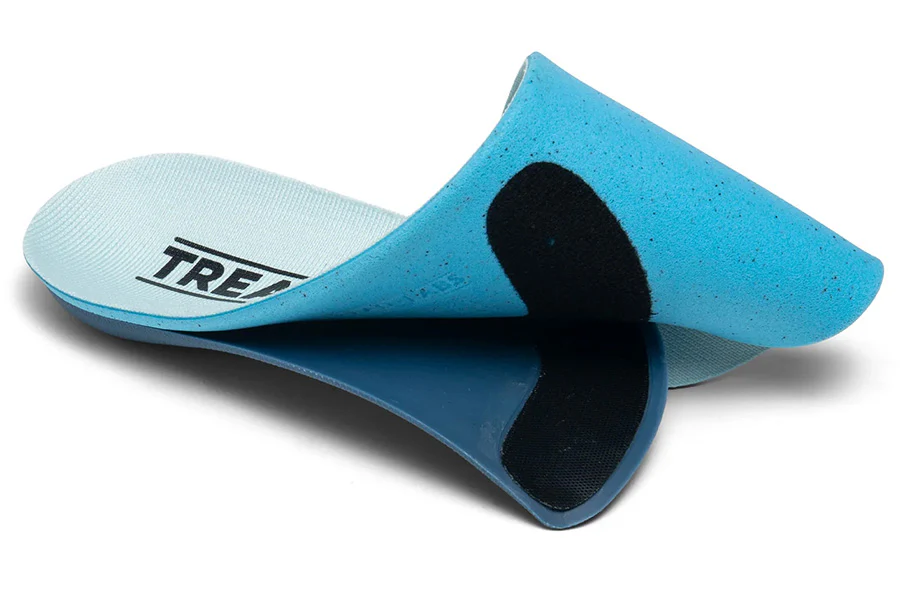
Maintaining Your Insoles for Long-Term Use
Proper care ensures insoles remain effective. If they become sweaty or wet, it’s best to remove moisture immediately. Hand wash them with mild detergent or sports detergent, then air dry completely before re-inserting. Ignoring deterioration can lead to discomfort and foot pain, so it’s best to inspect them regularly and replace them when necessary.
Some signs that your insoles need replacing include a flattened heel cup, a collapsed arch, or an uncomfortable fit due to excess pressure. Stock insoles that come with shoes often wear out faster, so investing in better models improves both comfort and foot health.
Modern Footwear Problems and the Need for Insoles
Many modern footwear designs contribute to structural misalignment. Narrow toe boxes, raised heels, and stiff soles limit natural toe spread, leading to deforming conditions like bunions. This also affects balance, grip, and overall stance, impacting posture, gait, and muscle engagement. Over time, this can weaken joints and create habitual issues that persist from young childhood into adulthood.
Walking barefoot is often recommended by specialists as a way to restore natural stance and gait. However, for those who need extra shock absorption, properly engineered insoles can be a healthier alternative, promoting flexible, wide toe box designs that allow the foot to function correctly.
Related Article: Latest studies on Insole effectiveness
Understanding Orthotics: Do You Really Need Them?
There’s a difference between standard insoles and orthotics. While regular insoles provide support and cushioning, orthotics are prescribed medical devices designed for specific foot issues. Some people rely on Dr. Google for self-diagnosis, but a podiatrist can offer a more accurate assessment and recommend suitable options.
Certain running shoe brands include sock liners, which are often overlooked but can influence fit and support. Some companies even use insoles as a business model, encouraging customers to return and swap sock liners for better adapted versions.
Final Thoughts: Finding the Right Balance
The key to a good insole is proper fit, support, and cushioning. If you’re dealing with joint or muscle pain, an insole designed for pain relief, recovery, and fatigue reduction can be life-changing. Advances in technology have led to flat soles, 3D soles, and even semi-custom insoles that adapt to individual activity levels.
Before making a purchase, it’s best to seek guidance from sports shops or professionals who can analyze your foot structure and recommend the right solution. The lifespan of an insole depends on factors like kilometers traveled, days worn, and personal frequency of use—whether you’re a casual walker or an ultra-runner. Regardless of the model you choose, investing in a high-quality insole can improve comfort, stabilize alignment, and promote overall foot health. When properly maintained, they help reduce fatigue, prolong the lifespan of shoes, and prevent long-term pain and injuries. If in doubt, always consult a professional for a clinical examination or paramedical consultation to ensure you get the best corrections for your footwear needs.
People Also Asked
How do insoles help with foot pain?
Insoles provide support, improve stability, and offer cushioning to reduce foot pain caused by structural misalignment, plantar fasciitis, or collapsed arches. They help distribute pressure evenly, preventing discomfort in the heel, midfoot, and forefoot.
What type of insoles are best for high arches?
For high arches, supportive insoles with direct arch support and adequate cushioning are ideal. High-volume insoles work well with hiking boots, ski boots, and running shoes, while medium-volume ones fit casual and athletic footwear.
How often should I replace my insoles?
The lifespan of insoles depends on usage. With daily, regular use, they typically last 12 months, while occasional or seasonal use can extend their life for years. Signs of deterioration, like flattened heel cups or lost cushioning, indicate it’s time for a replacement.
Can insoles fix structural misalignment?
While insoles help improve alignment, they don’t cure severe structural misalignment. However, they can relieve pain in the feet, ankles, knees, hips, back, and neck by stabilizing movement and reducing excessive rolling in or supination.
How do I clean and maintain my insoles?
To prevent moisture buildup, remove and air dry your insoles regularly. Wash them by hand using mild detergent or sports detergent, then allow them to fully air dry before re-inserting them into your shoes.
